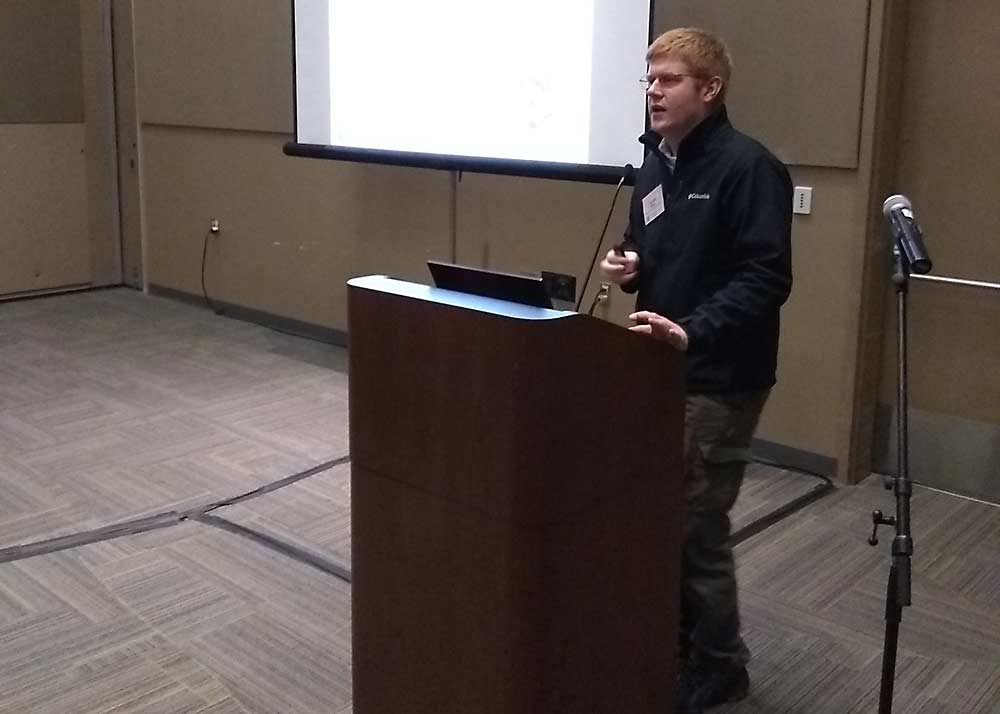Speakers covered dozens of educational topics during day one of the 2019 Great Lakes Fruit, Vegetable & Farm Market EXPO in Grand Rapids, Michigan. Fruit growers had lots of topics to choose from.
In the tree fruit session, Timothy Wilson, a wildlife biologist with the U.S. Department of Agriculture’s Wildlife Services program, recommended three “pillars” of wildlife management: Manage the site, put up barriers and manage the wildlife itself.
He said combining all three will give you the best strategy to deal with nuisance wildlife.
With birds, managing the site includes making it less attractive to them — by reducing unused perching locations and removing trees used for staging.
Barriers for birds include netting, which might be more realistic for larger operations because the installation and maintenance costs can be high, Wilson said.
There are two ways to manage nuisance wildlife: lethal and nonlethal. Nonlethal controls don’t require permits and include scaring and harassing with things such as dogs, vehicles, pyrotechnics, chemical repellents, predator effigies and distress calls.
Lethal controls including shooting, and trapping and euthanizing. These methods might require a federal or state permit, depending on the species. Bird species that are fair game include house sparrows, pigeons, starlings, blackbirds, cowbirds, and grackles. Migratory birds such as Canada geese and gulls are protected by federal law, however, and game birds such as turkeys, pheasants and grouse are protected by state laws. If you want to use lethal controls on those species, you need a special permit, Wilson said.

In a grape session, Tim Miles, an assistant professor at Michigan State University, discussed fungicide resistance.
He said fungicide resistance happens when a pathogen population changes from being sensitive to a fungicide to being insensitive. The shift happens because some members of the population have mutations that make them resistant to the fungicide, and continued selection over time makes the entire population resistant.
To manage fungicide resistance, rotate fungicide usage, keep inoculum low, use dormant sprays and seek advice from sources such as MSU, Miles said.
Spotted lanternfly is a huge problem in Pennsylvania vineyards, said Heather Leach, an associate with Penn State Extension.
At least 70 plants have been identified as hosts for the invasive species, including one of its favorites: the grapevine. The state has seen “scary, significant economic damage” to many of its vineyards from spotted lanternfly, Leach said.
“A lot of growers are postponing planning right now,” she said. “They’re not going to consider the future of their farm until we get spotted lanternfly under control.”
Methods of control include removing the tree of heaven, one of its favored hosts, from nearby vineyards. Growers are applying more insecticides to fight the pest. Spotted lanternfly is easy to kill with insecticides, but there are so many in some parts of Pennsylvania that as soon as you’re done spraying, you’re reinvaded, Leach said.
—by Matt Milkovich
Related:
—Spotted lanternfly a new grape threat
—Spotted lanternfly map shows high risk for West Coast wine regions
—Why some seasons are worse for powdery mildew






Leave A Comment